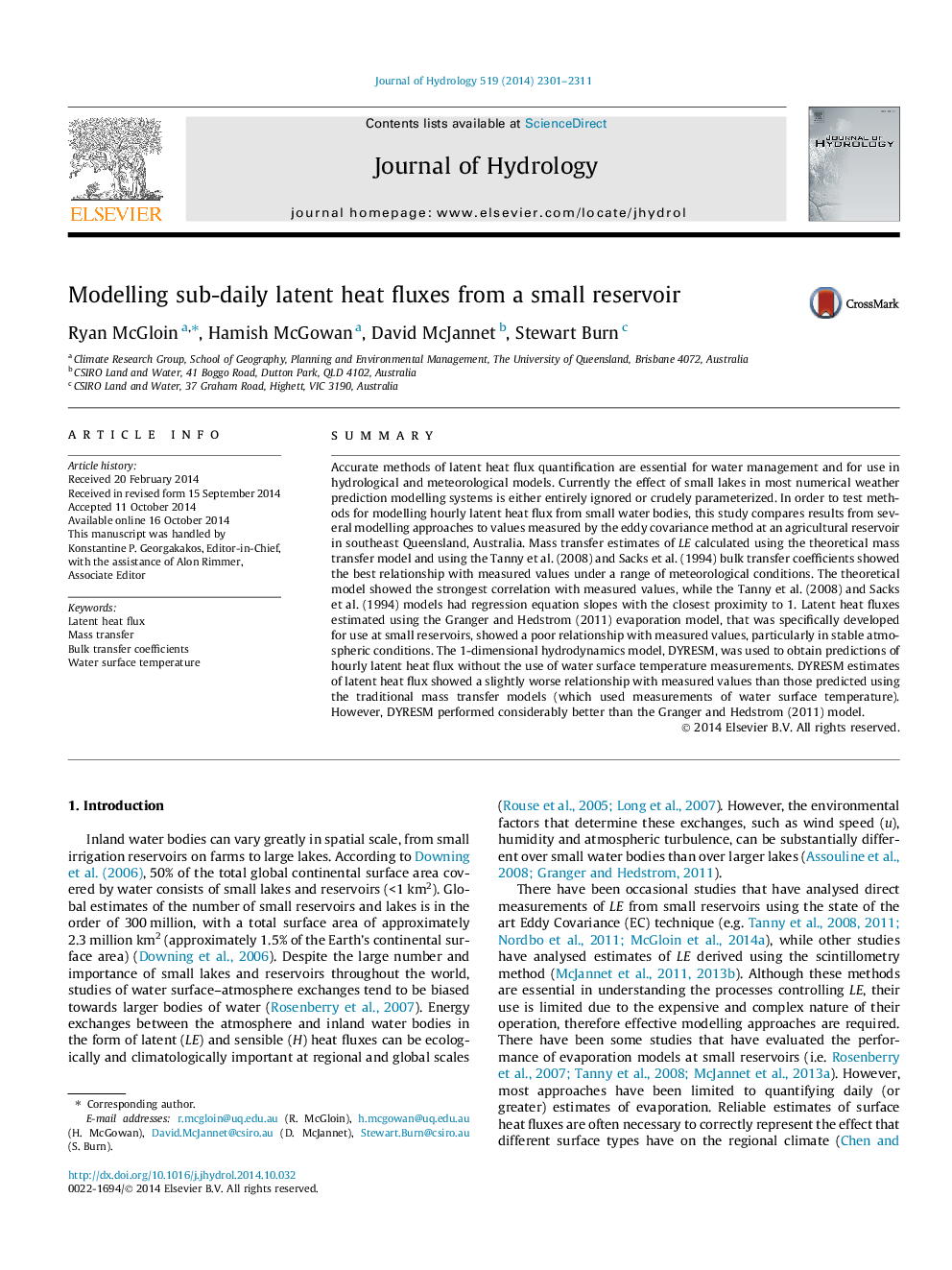| کد مقاله | کد نشریه | سال انتشار | مقاله انگلیسی | نسخه تمام متن |
|---|---|---|---|---|
| 6412108 | 1332896 | 2014 | 11 صفحه PDF | دانلود رایگان |
- Various modelling techniques were used to estimate sub-daily latent heat fluxes.
- The field site was a small reservoir in southeast Queensland, Australia.
- The theoretical mass transfer model was the best performing model in this study.
- The Granger and Hedstrom model performed the worst.
- Estimates by the DYRESM model tended to be greater than measured values.
SummaryAccurate methods of latent heat flux quantification are essential for water management and for use in hydrological and meteorological models. Currently the effect of small lakes in most numerical weather prediction modelling systems is either entirely ignored or crudely parameterized. In order to test methods for modelling hourly latent heat flux from small water bodies, this study compares results from several modelling approaches to values measured by the eddy covariance method at an agricultural reservoir in southeast Queensland, Australia. Mass transfer estimates of LE calculated using the theoretical mass transfer model and using the Tanny et al. (2008) and Sacks et al. (1994) bulk transfer coefficients showed the best relationship with measured values under a range of meteorological conditions. The theoretical model showed the strongest correlation with measured values, while the Tanny et al. (2008) and Sacks et al. (1994) models had regression equation slopes with the closest proximity to 1. Latent heat fluxes estimated using the Granger and Hedstrom (2011) evaporation model, that was specifically developed for use at small reservoirs, showed a poor relationship with measured values, particularly in stable atmospheric conditions. The 1-dimensional hydrodynamics model, DYRESM, was used to obtain predictions of hourly latent heat flux without the use of water surface temperature measurements. DYRESM estimates of latent heat flux showed a slightly worse relationship with measured values than those predicted using the traditional mass transfer models (which used measurements of water surface temperature). However, DYRESM performed considerably better than the Granger and Hedstrom (2011) model.
Journal: Journal of Hydrology - Volume 519, Part B, 27 November 2014, Pages 2301-2311
